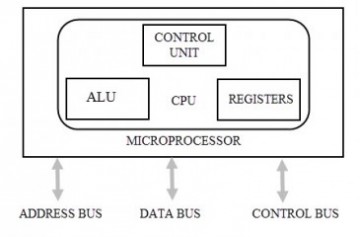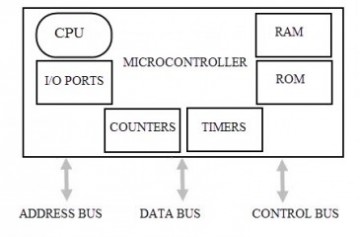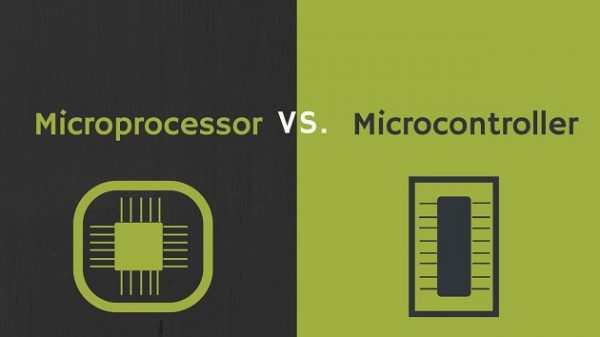Microprocessor vs Microcontroller, often in schools and colleges, we find it difficult to spot the difference between microcontrollers and microprocessors.
Well, these two complicated terms are the soul and core of programmable electronics. ELE Times always understands the need and importance of having a strong knowledge about the fundamentals of electronics. As a result, we have tried to explain to our readers what exactly is a microcontroller and a microprocessor.
Three Key Differences Between Microcontrollers and Microprocessors
- Cost: Generally, microcontrollers cost less than microprocessors. Microprocessors are typically manufactured for use with more expensive devices. They are also significantly more complex, as they are meant to perform a variety of computational tasks while microcontrollers usually perform a dedicated function. With a microcontroller, engineers write and compile the code intended for the specific application and upload it into the microcontroller, which internally houses all of the necessary computing features and components to execute the code.
- Speed: When it comes to clock speed, there is a significant difference. This relates back to the idea that microcontrollers are meant to handle a specific task or application, while a microprocessor is meant for more complex, robust, and unpredictable computing tasks. That means using just the right amount of speed and power to get the job done – no more and no less. As a result, many microprocessors are clocking speeds of up to 4 GHz while microcontrollers can operate with much slower speeds of 200 MHz or less.
- Power Consumption: One of the key advantages associated with microcontrollers is their low power consumption. A computer processor that performs a dedicated task requires less speed, and therefore less power, than a processor with robust computational capacity. Power consumption plays an important role in implementation design: a processor that consumes a lot of power may need to be plugged in or supported by an external power supply, whereas a processor that consumes limited power could be powered for a long time by just a small battery.
What is a Microcontroller?

A Microcontroller (sometimes called an MCU or Microcontroller Unit) is a single Integrated Circuit (IC) that is typically used for a specific application and designed to implement certain tasks. Products and devices that must be automatically controlled in certain situations, like appliances, power tools, automobile engine control systems, and computers are great examples, but microcontrollers reach much further than just these applications.
Essentially, a microcontroller gathers input, processes this information, and outputs a certain action based on the information gathered. Microcontrollers usually operate at lower speeds, around the 1MHz to 200 MHz range, and need to be designed to consume less power because they are embedded inside other devices that can have greater power consumptions in other areas.
What is Microprocessor?

A Microprocessor is an electronic component that is used by a computer to do its work. It is a central processing unit on a single integrated circuit chip containing millions of very small components including transistors,
Basic Difference
Microprocessor |
Microcontroller |
|
|---|---|---|
| Microprocessor acts as the heart of computer system. | The microcontroller acts as the heart of the embedded system. | |
| It is a processor in which memory and I/O output component is connected externally. | It is a controlling device in which memory and I/O output component are present internally. | |
| Since memory and I/O output is to be connected externally. Therefore the circuit is more complex. | Since on-chip memory and I/O output component is available. Therefore the circuit is less complex. | |
| It cannot be used in a compact system. Therefore microprocessor is inefficient. | It can be used in a compact system. Therefore microcontroller is more efficient. | |
| The microprocessor has fewer registers. Therefore most of the operations are memory-based. | The microcontroller has more registers. Therefore a program is easier to write. | |
| A microprocessor having a zero status flag. | A microcontroller has no zero flag. | |
| It is mainly used in personal computers. | It is mainly used in washing machines, air conditioners etc. |
Let’s spot the Technical Difference
Microprocessor |
Microcontroller |
|---|---|
 |
 |
| Microprocessor assimilates the function of a central processing unit (CPU) on to a single integrated circuit (IC). | A microcontroller can be considered as a small computer that has a processor and some other components in order to make it a computer. |
| Microprocessors are mainly used in designing general-purpose systems from small to large and complex systems like supercomputers. | Microcontrollers are used in automatically controlled devices. |
| Microprocessors are basic components of personal computers. | Microcontrollers are generally used in embedded systems |
| The computational capacity of the microprocessor is very high. Hence can perform complex tasks. | Less computational capacity when compared to microprocessors. Usually used for simpler tasks. |
| A microprocessor-based system can perform numerous tasks. | A microcontroller based system can perform single or very few tasks. |
| Microprocessors have integrated Math Coprocessor. Complex mathematical calculations which involve floating point can be performed with great ease. | Microcontrollers do not have math coprocessors. They use software to perform floating-point calculations which slows down the device. |
| The main task of the microprocessor is to perform the instruction cycle repeatedly. This includes fetch, decode and execute. | In addition to performing the tasks of fetch, decode and execute, a microcontroller also controls its environment based on the output of the instruction cycle. |
| In order to build or design a system (computer), a microprocessor has to be connected externally to some other components like Memory (RAM and ROM) and Input / Output ports. | The IC of a microcontroller has memory (both RAM and ROM) integrated into it along with some other components like I / O devices and timers. |
| The overall cost of a system built using a microprocessor is high. This is because of the requirement of external components. | The cost of a system built using a microcontroller is less as all the components are readily available. |
| Generally, power consumption and dissipation are high because of the external devices. Hence it requires an external cooling system. | Power consumption is less. |
| The clock frequency is very high usually in the order of Giga Hertz. | The clock frequency is less usually in the order of MegaHertz. |
| Instruction throughput is given higher priority than interrupt latency. | In contrast, microcontrollers are designed to optimize interrupt latency. |
| Have few bit manipulation instructions | Bit manipulation is powerful and widely used feature in microcontrollers. They have numerous bit manipulation instructions. |
| Generally, microprocessors are not used in real-time systems as they are severely dependent on several other components. | Microcontrollers are used to handle real-time tasks as they are single programmed, self-sufficient and task-oriented devices. |
Ultimately, microcontrollers and microprocessors are different ways of organizing and optimizing a computing system based on a CPU. While a microcontroller puts the CPU and all peripherals onto the same chip, a microprocessor houses a more powerful CPU on a single chip that connects to external peripherals. Microcontrollers are optimized to perform a dedicated low-power application – ideal for embedded systems – while microprocessors are more useful for general computing applications that require more complex and versatile computing operations.








